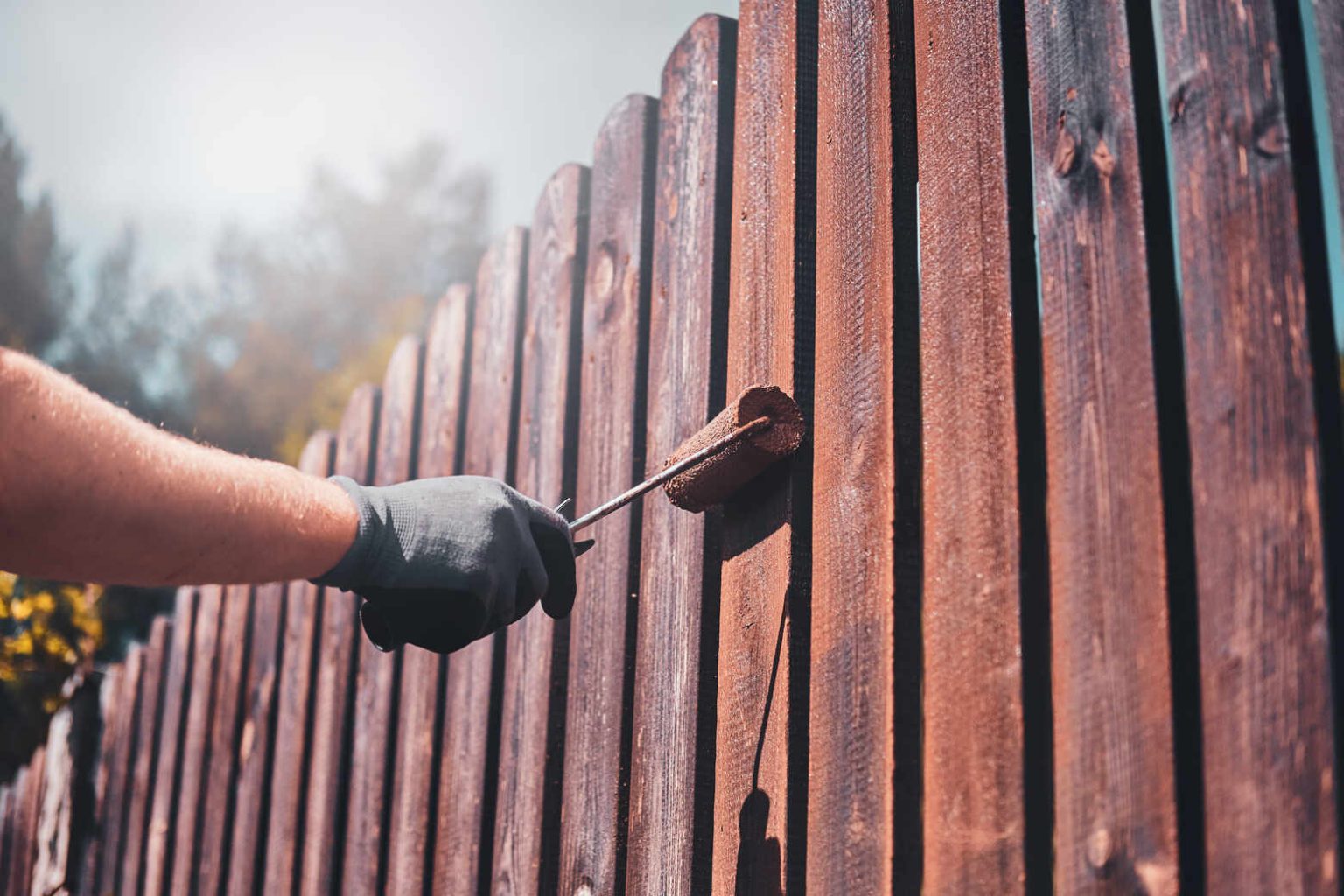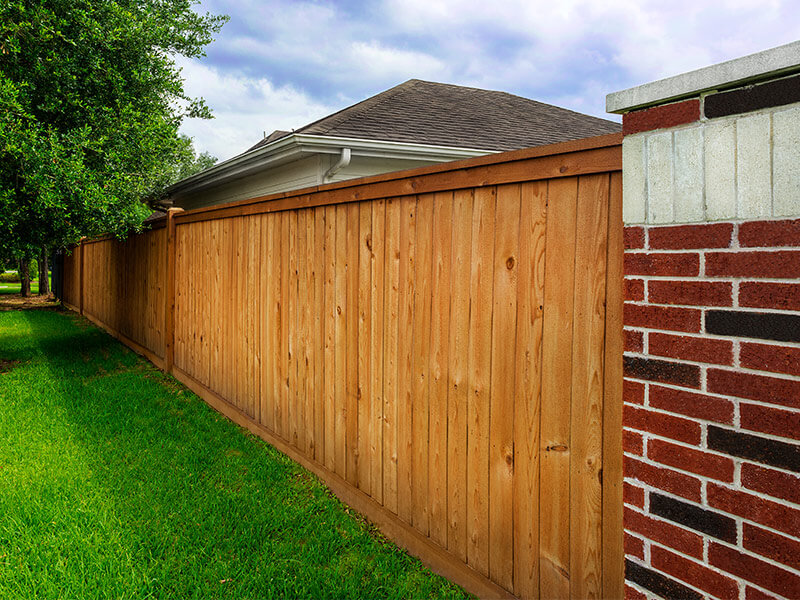Just How to Pick the Right Fencing Stain for Your Property
When it involves improving the look and longevity of your residential property's fence, picking the best stain is an essential choice that calls for cautious factor to consider. With a myriad of options readily available on the market, each accommodating various wood kinds, colors, and openness levels, the procedure can quickly become overwhelming. Nonetheless, making an enlightened choice can dramatically influence the general aesthetics and durability of your fencing. Exactly how can you ensure that you pick the best fence discolor that lines up with your building's design and maintenance needs? Allow's check out some essential elements to direct you in this decision-making process.
Understanding Wood Kind
To select the suitable fence tarnish, it is necessary to have a comprehensive understanding of the different types of timber commonly made use of for fencing. The choice of wood plays a vital role in figuring out the longevity and total aesthetic appeals of the fencing. Cedar is a popular option because of its all-natural resistance to decay and pests, making it a long lasting choice for outside frameworks. Pine is one more common timber made use of in fencing, known for its cost and simplicity of staining. Nonetheless, pine is a lot more prone to bending and rotting contrasted to cedar. Redwood is a high-end alternative understood for its striking look and all-natural sturdiness, though it comes with a higher cost. When picking a fencing stain, it is very important to take into consideration the kind of timber being made use of to ensure compatibility and ideal protection. Understanding the characteristics of different wood types will assist you make an informed choice when it comes to picking the right fencing stain for your property - Fence Staining Nashville TN.
Selecting the Right Color
Selecting a suitable shade for your fence discolor is a vital decision that significantly affects the overall aesthetic appeal of your home. The shade you pick should match the style of your home, blend sympathetically with the surroundings, and reflect your individual taste. When picking a color, consider the existing shade combination of your home. For an all-natural appearance, natural tones like browns, greens, or grays work well. These shades can assist the fencing mix right into the landscape and produce a cohesive appearance. If you choose a more modern or bold look, think about selecting darker tones like black or deep charcoal for a striking comparison. Lighter shades such as whites or light grays can make a fencing appear larger and add a touch of beauty to your building. Eventually, the ideal color option will boost the elegance of your fence and boost the general aesthetic allure of your home.

Considering Openness Levels
When choosing blog here the appropriate shade for your fence tarnish, one more vital element to take into consideration is the level of openness that will finest suit your home's aesthetic and maintenance demands. Openness levels in fencing spots normally fall under three categories: clear, semi-transparent, and strong. Transparent spots allow the natural charm of the wood to show with while supplying minimal defense against the components. They are optimal for new or well-maintained fencings where showcasing the wood grain is a priority. Semi-transparent stains offer an equilibrium between color improvement and defense, permitting some timber grain to be noticeable while giving moderate protecting from UV rays and dampness. Solid spots, on the various other hand, give the most security as they completely cover the timber with a nontransparent finish. These appropriate for older fences or those looking for considerable defense or shade modification. Consider the degree of exposure your fence faces, the wanted upkeep regularity, and the aesthetic you wish to attain when choosing the best openness degree for your fence stain.
Examining Maintenance Needs
Taking into consideration the long life and maintenance of your fencing, assessing the upkeep demands is important in determining one of the most ideal fencing discolor for your property. The degree of upkeep needed for your fence can vary relying on aspects such as the kind of wood, weather in your location, and your individual choices.
When evaluating maintenance needs, it is vital to think about the resilience of the fence tarnish. Some discolorations require even more constant reapplication than others, so picking a tarnish with a much longer life-span can aid reduce the general upkeep demands of your fence (Fence Staining). Additionally, factors such as resistance to UV rays, water, and mold can impact just how commonly you need to re-stain your fence

Testing Samples Before Application
Prior to applying any fence tarnish, it is recommended to conduct example examinations to make sure compatibility with the timber and wanted aesthetic result (Fence Staining Nashville TN). Examining samples permits you to assess exactly how the stain will communicate with the specific kind of timber made use of in your fence, as various woods can absorb discolorations in different ways. To begin, choose a tiny low-profile area of the fence to use the stain samples. It is recommended to evaluate multiple stain alternatives on this area to contrast shades and surfaces. Take into consideration just how the tarnish looks when completely dry, as it might show up various from its damp application. Additionally, observe exactly how the discolor matches the existing elements in your exterior space, such as landscape design or the shade of your home. Take note of just how the stain stands up to climate condition like sunlight and wetness. By testing examples prior to complete application, you can make an educated decision that enhances the overall look of your home while safeguarding the wood efficiently.
Final Thought
In conclusion, selecting the suitable fence tarnish for your building involves recognizing the timber type, choosing the right shade, taking into consideration openness degrees, examining upkeep requirements, and testing examples prior to application (Fence Staining). By taking these factors right into factor to consider, you can make certain that your fence stain matches your property while giving the essential security and longevity. Make an educated decision to enhance the look and longevity of your fence